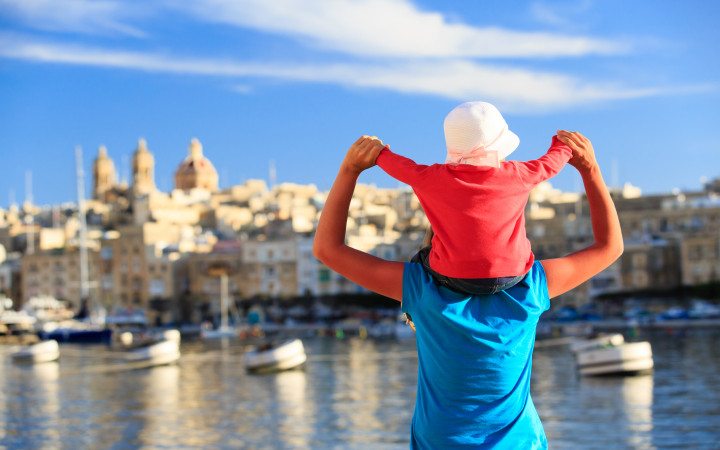Today’s Wonder of the Day was inspired by Wonder Team. Wonder Team Wonders, “Where is Malta?” Thanks for WONDERing with us, Wonder Team!
Our world is full of beautiful places. Here in Wonderopolis, we’ve learned about a lot of them. We’ve explored Appalachia and Rainbow Mountain. We’ve read about the Grand Canyon and the Canary Islands. Today’s Wonder of the Day is about another special place on planet Earth—Malta!
Malta is one of the world’s smallest nations. But this archipelago is also one of the most densely populated places on the planet. To many, that comes as no surprise. With its miles of sandy beaches, who wouldn’t want to live in Malta? Located about 58 miles south of Sicily, it also enjoys a mild climate year-round.
Malta’s location doesn’t just make for good weather, though. Many military leaders have seen the islands as strategically useful. For example, Malta played an important role in World War II. At that time, the region was part of the British Empire. It became a base for Britain and its allies during the war.
For that reason, Malta was under constant attack by German and Italian forces. At the end of the war, Britain awarded the Maltese people with a George Cross. It did so to recognize the nation’s bravery. When the islands became an independent nation in 1964, the new country made the cross a symbol on its flag.
Many cultures have lived in or had contact with Malta throughout history. The Romans, Greeks, Arabs, Normans, Sicilians, French, British, and many others helped shape Maltese culture. One of its most lasting influences is Roman Catholicism. Today, over 90 percent of Maltese people are part of this religion. In fact, the nation itself is home to 359 Catholic churches.
Many of these churches are unique pieces of architecture. One example is St. John’s Co-Cathedral in Valletta. The Knights of Malta built this large church in the 1570s. It was designed and decorated in the Baroque style. Over two centuries, the knights left many gifts and valuables there. Most are still there today. Thousands of visitors to Malta tour the cathedral each year.
Of course, much of Malta’s beautiful architecture was around long before Catholicism. The Hypogeum is a system of underground corridors. It was built about 6,000 years ago. Dug out of limestone, the Hypogeum includes temples, a cemetery, and even a courtyard. It is one of several structures on the islands built during the Neolithic Period.
Another major piece of Maltese culture is the festa. This is a public festival held in each village once a year. Every Maltese town has a patron saint, whom they honor during this time. Each area celebrates in their own way. The events often include parades and fireworks.
Maltese towns also tend to be quite competitive with each other. Each tries to throw the largest, loudest festa. They also face off in sports like rugby and polo. The villages love trying to outdo each other. Every town even has its own band. The band club plays a large part in organizing the annual festa. And, of course, it provides the music!
Have you ever been to Malta? Perhaps you’re one of the 440,000 people who live there! If not, you could still join the many visitors who spend time in the island nation each year. From its rich culture to its beautiful beaches, Malta is a place unlike any other.
Standards: C3.D2.Geo.2, CCRA.L.3, CCRA.L.6, CCRA.R.1, CCRA.R.2, CCRA.R.4, CCRA.R.10, CCRA.SL.1, CCRA.W.2, CCRA.W.4, CCRA.W.9, CCRA.L.1, CCRA.L.2, C3.D2.Geo.2, C3.D2.Geo.3, C3.D2.Geo.9,




